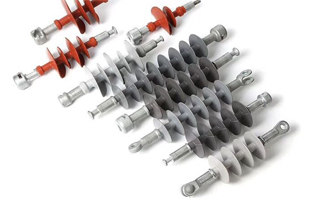At present, China's economy is continuously developing rapidly, people's living standards are constantly improving, and power demand is also growing rapidly. At present, China's energy centers and load centers are severely unevenly distributed. Hydraulic and coal resources are mainly concentrated in the western and northern regions, while load centers It is mainly concentrated in economically developed areas in the east and south, so large-scale electricity will be transmitted from southwest and northwest to southeast coastal areas in the future. China's current 500kV DC-based power grid is difficult to adapt to such long-distance, large-capacity transmission requirements Construction of 1000kV AC and + 800kV DC UHV backbone network. Composite insulators are used more and more in domestic transmission lines due to their good pollution resistance and light weight. The experience of related personnel using composite insulator is also increasing. More and more abundant. Due to the high external insulation requirements of UHV power grids, it is inevitable to use a large number of composite insulators.

Composite Insulator
Application of composite insulators in China
China's power grid began to use composite insulators in the early 1980s. Based on lessons learned at home and abroad, the Chinese power industry has developed and developed high-temperature vulcanized silicone rubber composite insulators from the beginning. In the late 1980s, it was completed The development, transfer of achievements and industrial production of silicone rubber composite insulators. In the early 1990s, in order to curb large-scale pollution flashover accidents in areas such as East China, North China, Northeast China and other regions where pollution flashover occurred, a large number of composite insulators were introduced into the power grid. By the end of 1994, The number of composite insulators running on the grid has reached 50,000. Since then, the number of composite insulators used in China's power grid has increased rapidly: 100,000 in 1995, 200,000 in 1996, 460,000 in 1998, and 840,000 in 1999. It has reached 1.6 million in 2001, and about 2.9 million in 7 years.
At present, the number of composite insulators used has far exceeded 2 million, and new lines (including AC and DC 500kV lines) have begun to use composite insulators in large quantities. In just a few years, the main manufacturers of composite insulators have completed mandrels and protection. The continuous extrusion of the sleeve interface and the improvement of the overall injection molding; the connection process of the end fittings and the core rod is gradually improved from the internal and external wedge type to the crimp type with high reliability and easy monitoring.
(1) The history of extensive use of composite insulators in China's power system has been more than 15 years. The accumulated operating experience has confirmed that composite insulators have many advantages, and the current overall operating conditions are satisfactory.
(2) China's composite insulator manufacturing technology has reached the international advanced level. At present, almost all damage accidents of composite insulators are manifested in internal insulation breakdown and mandrel fracture, with an annual damage rate of 0.005%, which is better than that of other countries in the world. Average. The main reason for the damage is the immature early design, manufacturing process and material formulation.
3) Under normal circumstances, the aging of composite insulators is a slow process, which will not cause large-scale accidents. The service life of composite insulators with excellent quality in general areas can reach more than 20 years.
(4) In UHV AC and DC transmission lines, the use of composite insulators can effectively prevent pollution flashover accidents and reduce construction and maintenance costs.
However, it is necessary to study the special characteristics of UHV and strengthen construction and maintenance management to ensure the long-term and safe operation of UHV grids.
+86 319 878 9350
+86 156 1304 7999
+86 319 878 9350
NanYan, DongHuan Road, Shahe, Hebei China
Copyright © Hebei Yipeng Line Equipment Co., Ltd. All Rights Reserved. | Sitemap Powered By 
